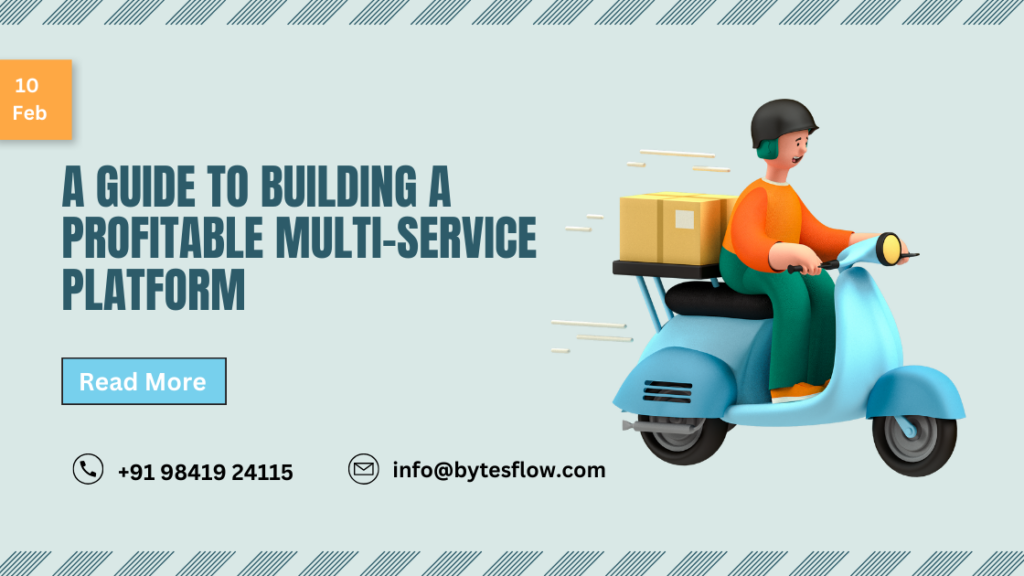Today, in the digital age, people want on-demand services more than ever. This has led to the rise of multi-service delivery platforms. These platforms let users easily access many different services using just one app. They can order food, request transportation, and more. However, creating a successful multi-service delivery clone takes a lot of careful planning and understanding of what users want.
Let’s go through the important steps to turn your multi-service delivery clone into a reality.
-
Identify Market Needs
To build a successful multi-service delivery platform, start by identifying the market needs and opportunities. Conduct market research to understand the demand for different services in your target region or demographic.
Analyze existing platforms to find gaps or areas for improvement that your platform can address. By understanding the market, you can tailor your platform to effectively meet your target audience’s needs.
-
Define Your Unique Value Proposition
Understand the market needs. Define your platform’s unique value proposition. What makes your platform different from existing solutions? Is it faster delivery times, more services, or better customer service? Clearly explain the benefits of using your platform. Your unique value proposition will be important in attracting users and standing out in a competitive market.
-
Design User-Centric Features
The success of a readymade multi-service delivery clone depends on user experience. When designing your platform, prioritize simplicity, intuitiveness, and convenience. Make sure your interfaces are user-friendly, allowing users to easily browse services, place orders, and track deliveries.
Improve the user experience by including features like real-time tracking, personalized recommendations, and secure payment options. By focusing on user needs and preferences, you can create a platform that users love and want to use again.

-
Build a Robust Technology Infrastructure
A strong technology foundation is essential for a successful multi-service delivery platform. Invest in reliable backend systems that can handle multiple services, orders, and transactions at the same time.
Use cloud computing and microservices architecture for flexibility, scalability, and resilience. Focus on security to protect user data and transactions. A solid technology foundation is crucial for smooth operations as you grow.
-
Forge Strategic Partnerships
To provide many different services on your platform, partner with service providers from different industries. Work with restaurants, grocery stores, transportation companies, and other service providers to bring them onto your platform.
Create partnerships that benefit both sides and match your platform’s values and goals. By partnering strategically, you can offer a wide range of services and attract more users with different needs.
-
Launch, Learn, and Iterate
After building your multi-service delivery app clone, it’s time to launch it. Get feedback from early users and make changes based on their insights and suggestions. Keep an eye on important metrics like user engagement, retention, and satisfaction to see how well the platform is doing and find areas where it can be improved.
Keep improving your platform based on user feedback, market trends, and new technology. By being agile and always evolving, you can stay ahead of competitors and give users a great experience.
Summarizing: Build Your Multi-Service Delivery Clone Now!
To create a successful multi-service delivery platform like Swiggy, Postmates, and Gojek, you need to plan carefully, execute well, and focus on what users want. Start by figuring out what the market needs and coming up with a special value that sets your platform apart. Then, design features that prioritize the user.
Build a strong technology foundation and form strategic partnerships. Use feedback from users to make improvements. With dedication, innovation, and a commitment to excellence, you can make a platform that changes how people get on-demand services and becomes a market leader.
